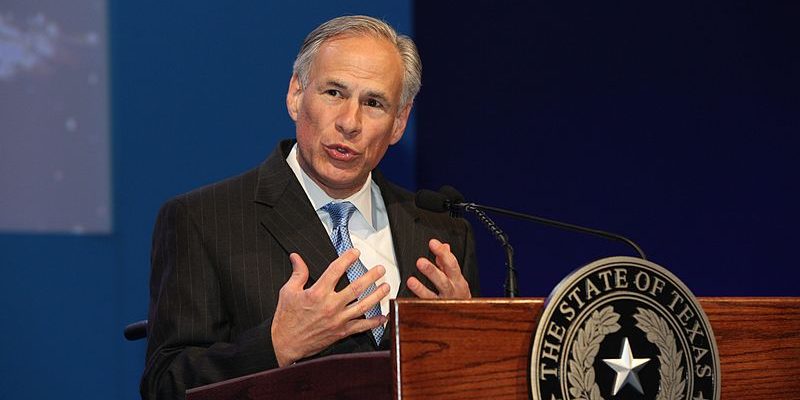During a press conference that took place on Sunday March 22, 2020, Texas Governor Greg Abbott gave an update on the Texas State Government’s current progress on dealing with the COVID-19 outbreak. Governor Abbott enacted executive orders to “enable maximum hospital beds” for COVID-19 Patients and delay unnecessary surgeries. Even though as of the date & time of this publication Dallas County has adopted a shelter in place order, it should be noted that Governor Abbott did not expand the limited business prohibition to a shelter in place order at the state level which is essentially a practical shutdown of the economy similar to what transpired in at least five states including California, New York, and Illinois.
Clearly Governor Abbott factored in the vast negative economic impact such closures would do to an already crippled economy versus any extra potential to “flatten the curve” of the Coronavirus Outbreak. It should also be pointed out that Governor Abbott was one of the last Governors to issue a limited closure order of dine-in restaurants and bars, stating only days before he gave the order he was trying avoid doing so unless it was absolutely necessary because of the disruption to the economy and breakdown of society at the time would outweigh the benefits of such action. It was only after the CDC guidelines were released March 19th regarding expanded social distancing is when the limited closures were enacted.
Clearly Governor Abbott is aware of how much more damage a California like “Shelter in place shutdown” would do to the Texas Economy. With massive layoffs already in the service industry as well as a very depressed oil market, the last thing the Texas Economy needs is more government mandated closures. Many displaced workers in the service industry have turned to food delivery services as temporary gig employment to help pay their living expenses. While the shelter in place orders of Dallas County, and likely Harris County will not currently affect restaurant take-out and delivery operations, the only thing keeping those businesses afloat and employees on the payroll as of right now. Don’t be too surprised that the range of businesses of what is considered “essential,” could be reduced to the point that restaurants might in the future be forced to shutdown completely because they could eventually be considered “non-essential businesses.” Not only will this put the delivery drivers and restaurant employees out of work which will contribute to the 20% jobless claims, but also put an even bigger strain on the supermarkets and their supply chains.
The list of other “essential businesses” currently includes big box stores, auto repair and parts shops, gas stations, and even liquors stores. What are listed as “non-essential businesses” and must remain closed include gyms, spas, movie theatres, arcades, and many small business such as boutique shops, salons, bars, and places of worship with gatherings of more than ten people with the penalty of a fine or jail-time. One must consider the long term physical and mental health-effects of sheltering in place which goes against traditional health recommendations of getting out, being active, and eating healthy, which has been replaced with staying home on the couch and eating junk food during this pandemic quarantine. The very act of social distancing itself exacerbates a common problem with 21st century society where we are more concerned with what is on our screens, than what is actually happening around us. This might cause irreparable damage to fabric of society itself.
Advertisement
Also to be considered is how long and difficult it will it be to restart the flat-lined economy once this pandemic has run it’s course. By keeping restaurants and small businesses open, it allows to some degree of economic activity to continue by allowing these businesses to continue to generate revenue to pay their expenses and employees. What needs to be considered is not the just the restart costs and debt incurred, but also “rust and stagnation” of equipment and training. Just like a barn-find car, you can’t just “turn the key” and restart a shutdown business, especially if it has many moving parts. With kitchens at a shutdown restaurant, how much of the equipment needs to be not only cleaned, but repaired or replaced due to lack of use? With assembly lines, how long will it take for the products being produced to have the reliability of the per-shutdown units? How much retraining of the workers and staff needs to take place due to being furloughed? How much of the economy cannot be restored because of the loss of knowledge and tooling. A good example being the failed attempts to restart production of certain aircraft such as the 757 and F22, not only has the tooling be lost to time, so has the knowledge behind it’s engineering.
Governor Abbott should be applauded for factoring in these risks of a shutdown to the overall economy outweighing any potential side effects of keeping the Texas Economy open at the levels they are currently. The long term damage to the quality of life is going to be affected for years because of this global pandemic and by not closing the remainder of Texas businesses, it will prevent further long term damage to the Texas Economy as a whole. We can only hope not only for the good of Texas, but good of the Nation and the World that this does not escalate any further than it has. Even President Trump feels that at the end of this 15 day period, the action of shutting down the economy is more than likely worse than the direct effects of the virus itself.
Advertisement
Advertisement

